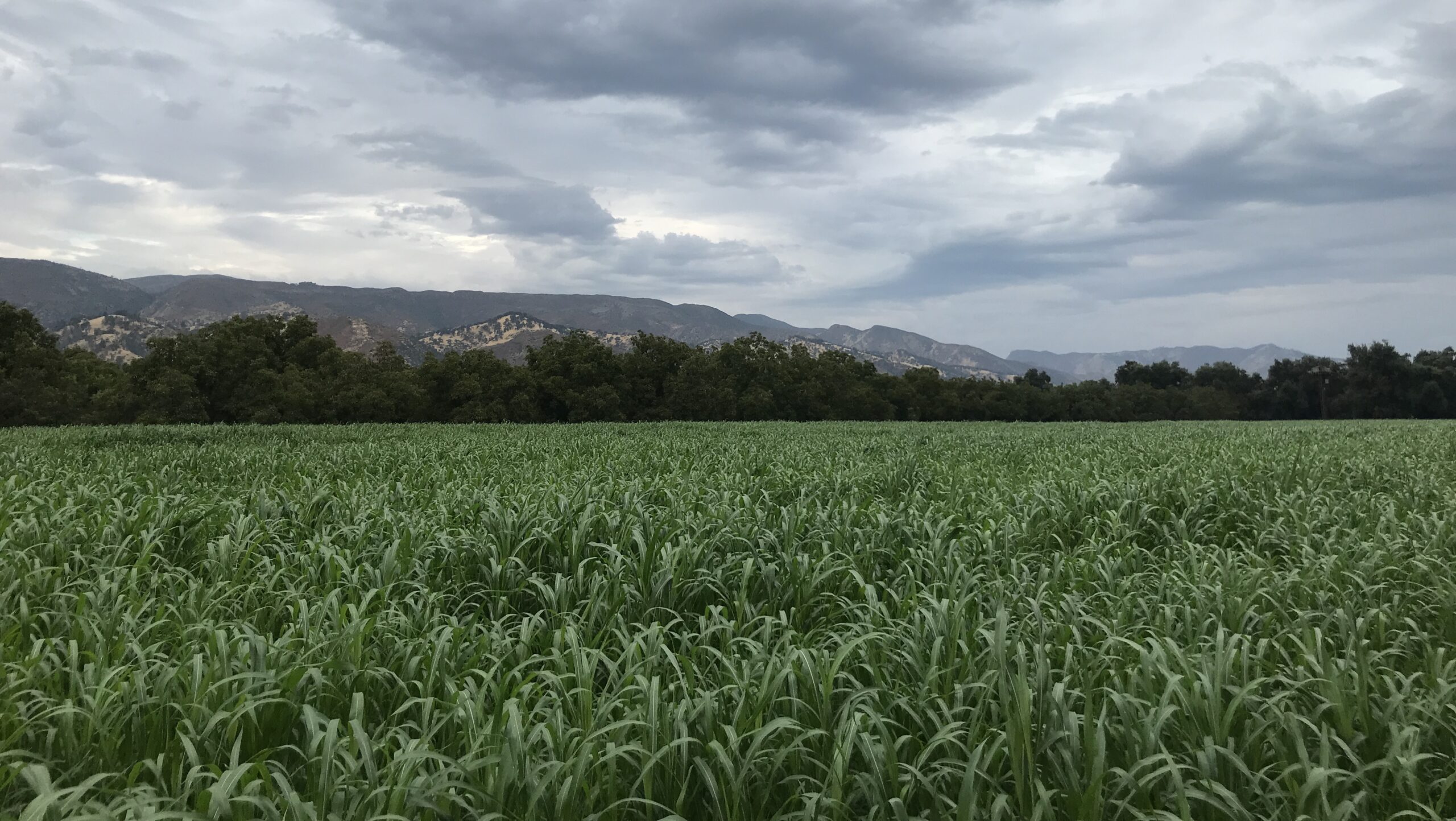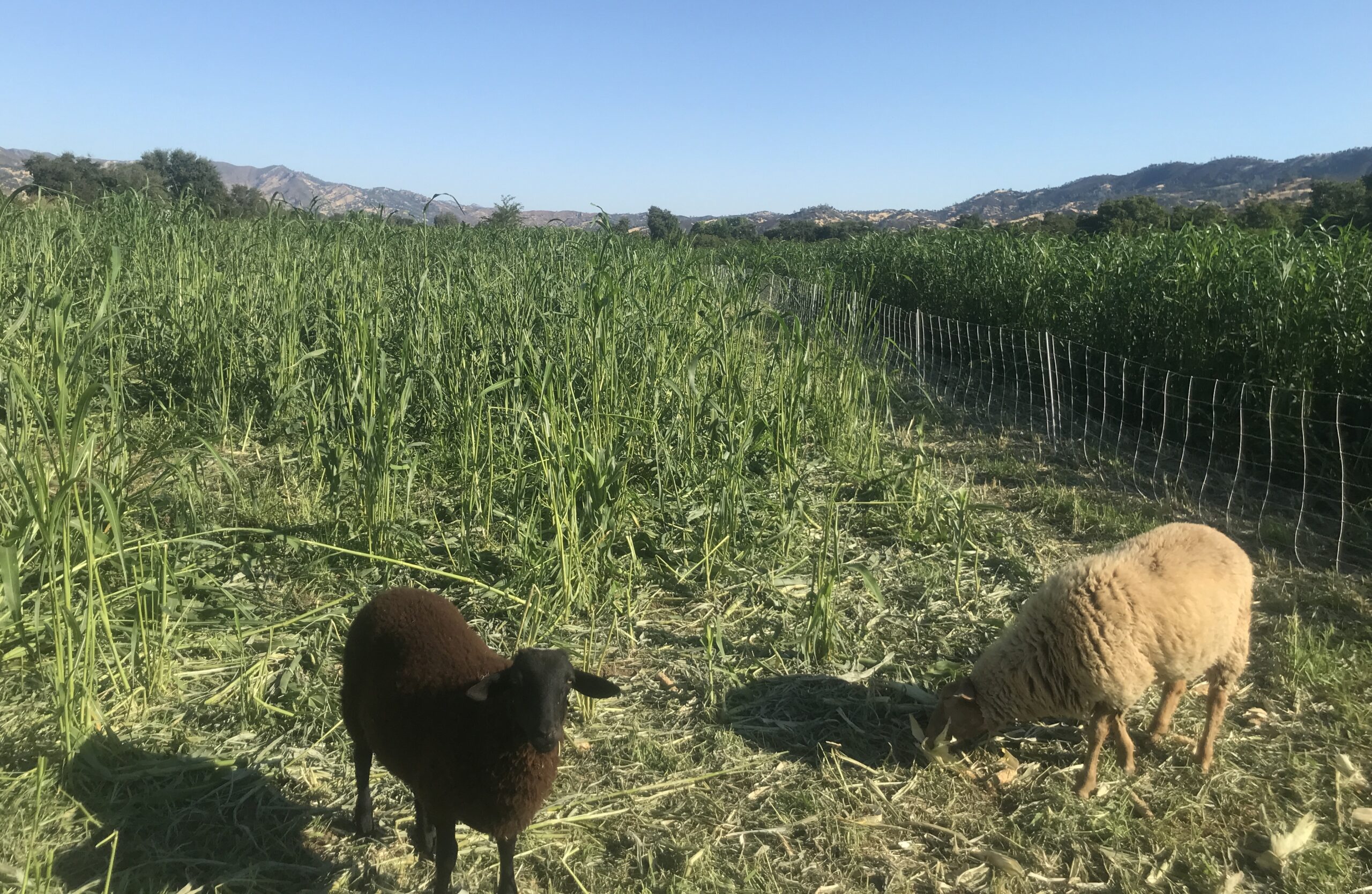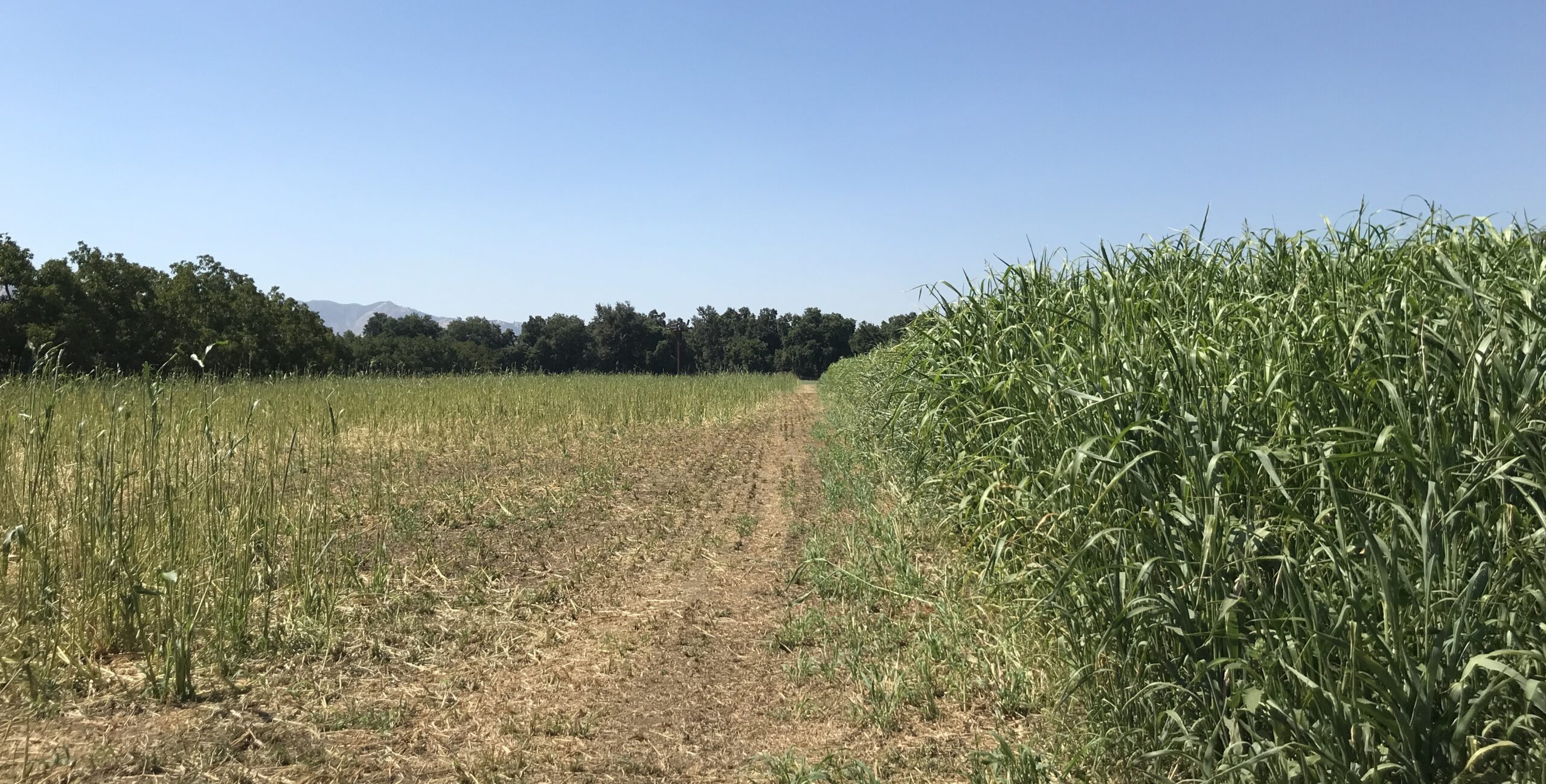
Among the seemingly endless fields of melons, tomatoes, winter squash, and other warm-weather crops, we currently have several fields of cover crops going strong. Yes – that photo of the lush green above was taken this morning (August 21, 2023) on an unseasonably cool, cloudy, and drizzly day; it’s not a photo from earlier this year. Cover crops aren’t just for the cooler seasons, even though that’s when we tend to talk about them most (like this deep dive into cover crops last November)! The work of feeding and caring for the soil and “growing” healthy soil never ends, so when we have the water and field space to grow summer cover crops, we do. It seems counterintuitive to take land out of production during our peak harvest time to grow a non-sellable crop, but it’s an excellent opportunity to grow a fast-growing, healthy cover crop and invest in our soil and bountiful future harvests.
A quick refresher: a cover crop is a crop grown primarily to benefit the soil, not to be harvested and removed from the land. We’re trying to grow and sustain biology above and below ground; when we grow a cover crop, we’re growing food for soil microorganisms (bacteria, fungi, protozoa, nematodes, earthworms, and arthropods, etc.). While the plants are growing, they’re absorbing carbon from the atmosphere and are releasing sugars and other nutrients into the soil, feeding the below ground ecosystem. When the crop is terminated and added to the soil, it further feeds the soil microbes. Like us, soil microbes benefit from a diverse diet, so we grow a mix of species in our cover crops. The more diverse the system above ground, the more diverse the system below. That below ground diversity creates robust soil that fosters healthy plants and leads to more flavorful and more nutritious produce.
In winter, we grow cover crops to handle rain (to retain soil and rainwater), and add organic material and nutrients to the soil. We grow a mixture that includes vetch, peas, fava beans, clover, tillage radish, mustards, oats, and a few other grains. This mix will fix nitrogen (the legumes – fixation converts nitrogen in the atmosphere into a form that plants can absorb through their roots), break up the soil (radishes), add biomass to the soil, and provide a habitat and food for pollinators. After growing all winter, our sheep graze these fields (ideally right before they flower), or we mow with a tractor. When the animals eat the cover crop, their digestion adds additional biological diversity to the soil and changes the availability of those nutrients.
In summer, it’s the same process of growing a mix of plants, then incorporating those plants into the soil, either by sheep followed by a tractor, or just a tractor. If we’re planting a summer cover crop, after we finish a winter or spring crop, we mow the field, irrigate, remove weeds that come up, then plant the cover crop mix. Once the field is mature, we graze it with sheep or mow with a tractor and then will prep the beds for a fall crop or winter cover crop.
But there are a few differences when it comes to growing summer cover crops, due to the very different weather. One difference is the crop mix. Our summer mix includes black-eyed peas, buckwheat, cowpeas, sorghum, sudan grass, sunflowers, and sunn hemp, all of which do well in our summer heat and grow quickly, so they can outcompete weeds. The legumes in the mix fix nitrogen, grasses (sudan and sorghum) add a lot of biomass (carbon) to the soil, and buckwheat flowers provide food for native pollinators.
In summer, we aren’t protecting soil from washing away in the rain or absorbing rainwater; our primary goal is harvesting the sunlight and improving soil health. All of our abundant summer sun and heat meant that with a little water, we can quickly get a lot of plant growth. The cover crop grows about a foot a week, so after six weeks, we have a six-foot tall cover crop, a lot of biomass (about 10 tons per acre) to add to the soil. Our cover crops have been growing so vigorously that the sheep haven’t been able to get to all of it while the plants are tender and supple. In the fields they do graze, they do quick work, nibbling all but the toughest stalks. A winter cover crop takes about five months to grow that much, taking a field out of production for a longer period of time.


Another major difference between summer and winter cover crops is water. During a normal winter, there’s enough rain to grow a successful cover crop. During the summer, we have to irrigate each field three times, so growing a summer cover crop is only possible if we have enough water. Some of our fields don’t have access to irrigation water, so they can’t be planted in a summer cover crop, and in dry years, like the last two summers, we haven’t been able to plant much even in an irrigated field. Not so this year after all the winter and spring rain. In many parts of California that deal with a different water situation, like the San Joaquin Valley, summer cover crops are never practical.
Cover crops are a long-term investment in our soil. By feeding our soil microbiome, we’re improving soil structure, nutrient availability, water-holding capacity, and water use efficiency, ultimately allowing us to better feed you. Reaping these benefits takes time; the carbon and other nutrients in the current cover crop need to be broken down, and it can take years for nutrients to become available for plants to absorb them. When you eat a delicious slice of melon, or tomato this week, you’re tasting of years of soil investment and care for soil health.
– Elaine Swiedler, CSA Manager
*Interested in learning more about cover crops, soil health, and feeding the soil? We’d recommend checking out the work and writings of Christine Jones, many of which are available on her website.
